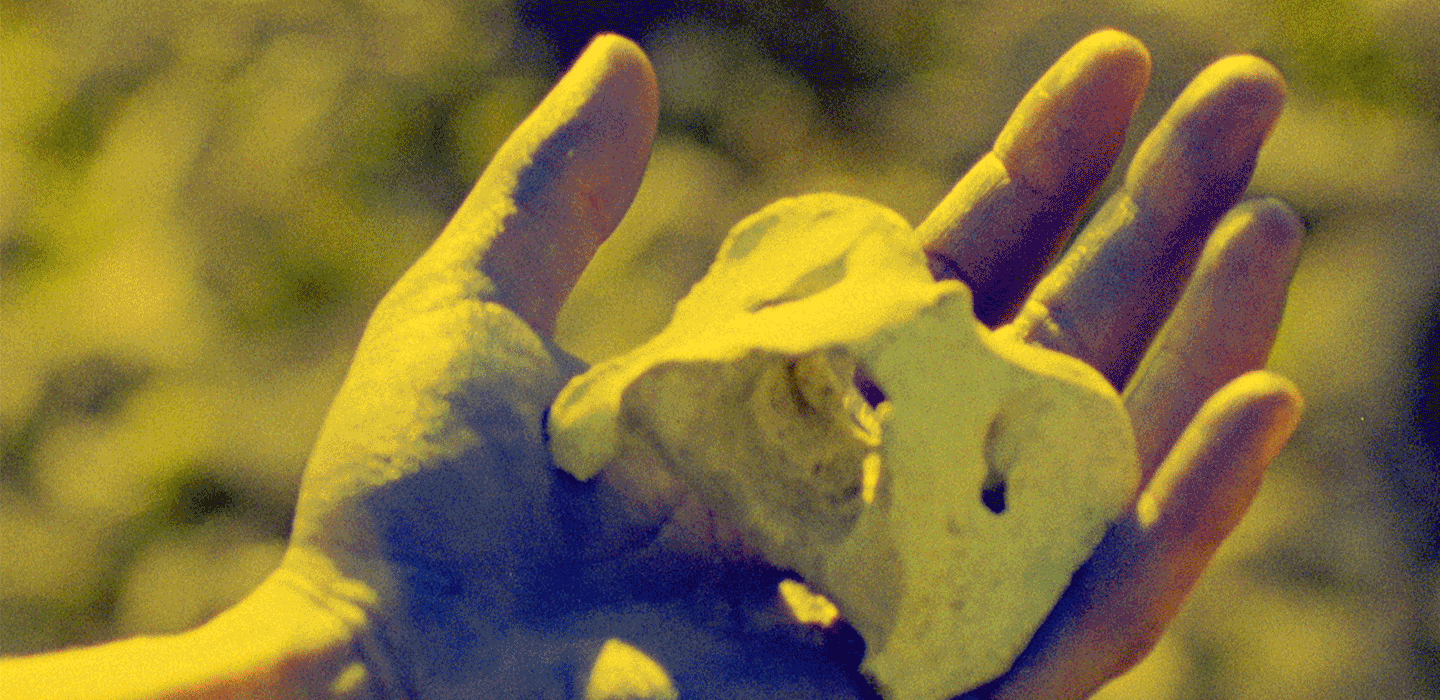The Dent
February 5–April 18, 2022
Röda Sten 1
SE-414 51 Gothenburg
Sweden
Hours: Wednesday 12–8pm,
Thursday–Friday 12–5pm,
Saturday–Sunday 11am–5pm
T +46 31 12 08 16
info@rodastenkonsthall.se
The title of the exhibition derives from Basim Magdy´s film The Dent, which represents a departure point in the artist’s solo exhibition at Röda Sten Konsthall. The Dent presents five films together with a newly commissioned film work, along with various photo-installations and one interactive artwork. The exhibition also includes a selection of paintings which the artist was working with extensively during the lockdowns of 2020/2021.
Throughout his work, Magdy exposes very complex and convoluted constellations of contemporary social and political power structures, and the ways in which they might bring an end to the world. The dramatic tension in Magdy´s artwork is built upon present and (still) not existing realities and relies on counter-narrative plots, scripted by the artist, which are played against the backdrop of the absurdity of life and banality of existence.
Looking closely at the exhibition concept, it is important to stress that its reference to Magdy´s film The Dent is twofold. Etymologically the word “dent,” among other things, denotes a material change on the surface of hard metal; a slight hollow in a hard even surface made by a blow or pressure; a distraction caused by accident.
Regarding the film plot, Magdy says: The Dent weaves loosely linked events and irrational occurrences to reflect upon collective failure and hopefulness. An anonymous little town struggles for international recognition as it becomes obvious failure is a monster too big to slaughter.
On one hand, the literal meaning of the word dent inspired the labyrinth-like structure of the exhibition. On the other hand, the mental imagery of the dent works as a metaphor for what Magdy is exposing which can be perceived as a “rabbit hole” phenomenon. In other words, the imagery is used to induce a “going down the rabbit hole” experience when stepping into Magdy´s exhibition.
As the author Kathryn Schulz argues, a “rabbit hole has many metaphorical applications—from frustrating red tape to the mind-bending complexity of science to hallucinations during altered states—all united by a common sense of passing into some labyrinthine, logic-defying realm that, once entered, is hard to get out of.” (Kathryn Schulz, “The Rabbit-Hole Rabbit Hole,” The New Yorker, June 4, 2015).
The interpretations of “rabbit hole” phenomena have significantly changed and further evolved in the digital age. Thus, “going down the rabbit hole” seldom means winding up in a completely strange and new setting. More often it means, like in both Magdy´s film The Dent as well as in his overall practice, that “we got interested in something to the point of distraction—usually by accident, and usually to a degree that the subject in question might not seem to merit.” (Schulz).
Another important aspect of the exhibition grew out of site-specific research carried out in Sweden in 2021, namely in the Bohuslän region, near Tanumshede. Two significant historical places meet each other at this location: the prehistoric Rock Carvings of Tanum (UNESCO World Heritage Site from 1994) and the Tanum Teleport, built in 1971, which was the first satellite transmitting telephony, data, and TV signals from this part of the world to other continents.
50 years later, Tanum Teleport is no longer operational, and is mostly forgotten. The promised modernist vision of the future disappeared along with the belief and trust in anything or anyone. As Basim Magdy so astutely narrates in M.A.G.N.E.T, one of his other films presented in the exhibition:
This is a balloon floating like a cloud
In the sky above Manhattan, New York
It was inflated with helium and purchased by a father
For his 6 year old daughter at a store called Party City on 14th street
The little girl walked up to 23rd street and let go of the balloon
The helium in the balloon is lighter than the air
And relatively resists gravity
But this was a year ago
Things have changed since then
Party supply stores don’t sell helium-inflated balloons anymore
It’s absolutely pointless
Doubting everything and leaving the space open for everyone, Magdy´s criticism has no name, no trademark, no definition, no country, no ideology. His criticism tackles the finest parts of our tiny selves by laughing at the fallacy of human omnipotence.
Relying on humor and self-irony—Magdy´s strongest critical tools, The Dent aims to bring hope to the future by admitting to current mistakes. Accepting our own failures and even being able to laugh at them might not be a bad place to start at all.
Basim Magdy (b. 1977, Egypt) is an artist and filmmaker. His films, paintings and photographic works are layered with poetic details and colorful observations that allude to absurdity as a daily occurrence. His work mixes humor with fiction, historical references and collective delusion – all of which seem to be trapped inside a confused sense of time where the past, present and future constantly switch places.
His work appeared recently in solo exhibitions at museums such as M HKA, Museum of Contemporary Art, Antwerp; MAAT Museum of Art, Architecture and Technology, Lisbon; La Kunsthalle Mulhouse, Mulhouse, France; MCA Museum of Contemporary Art, Chicago; MAXXI National Museum of the 21st Century Arts, Rome; Jeu de Paume, Paris; Arnolfini, Bristol; CAPC Museum of Contemporary Art, Bordeaux, Art in General, New York and in group shows at MoMA The Museum of Modern Art, New York; Centre Pompidou, Paris; Castello di Rivoli, Torino, New Museum Triennial, New York; Istanbul Biennial; Sharjah Biennial; Athens Biennial, GIBCA Gothenburg, SeMA Media City Seoul Biennial, KW Institute for Contemporary Art, Berlin; The Museum of Contemporary Photography, Chicago; Museum of Modern Art, Warsaw, Yerba Buena Center for the Arts, San Francisco and Palais de Tokyo, Paris. Magdy won the Abraaj Art Prize, Dubai (2014) and he was selected Deutsche Bank’s 2016 Artist of the Year.
The exhibition is curated by Amila Puzić, curator at Röda Sten Konsthall.


